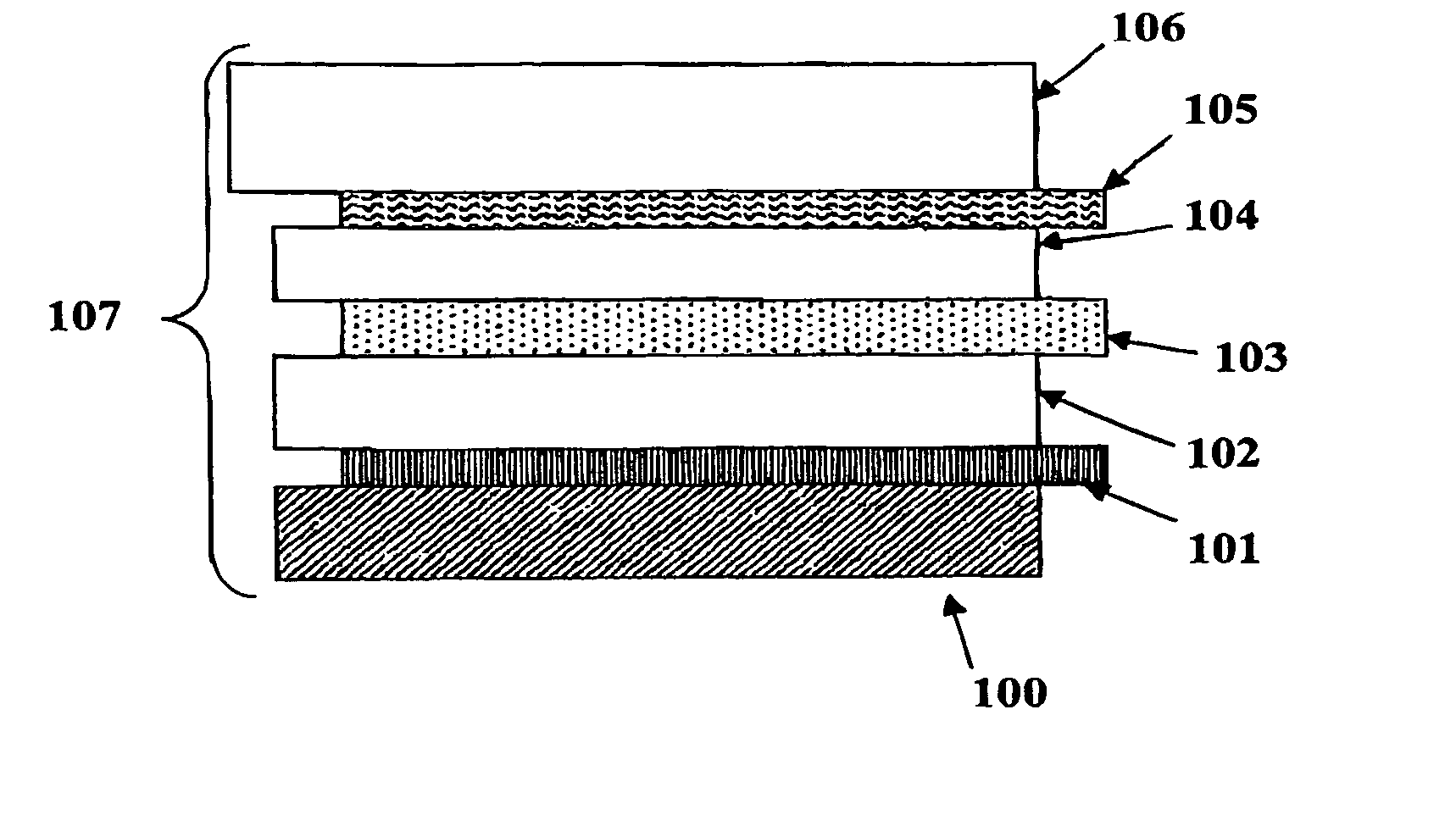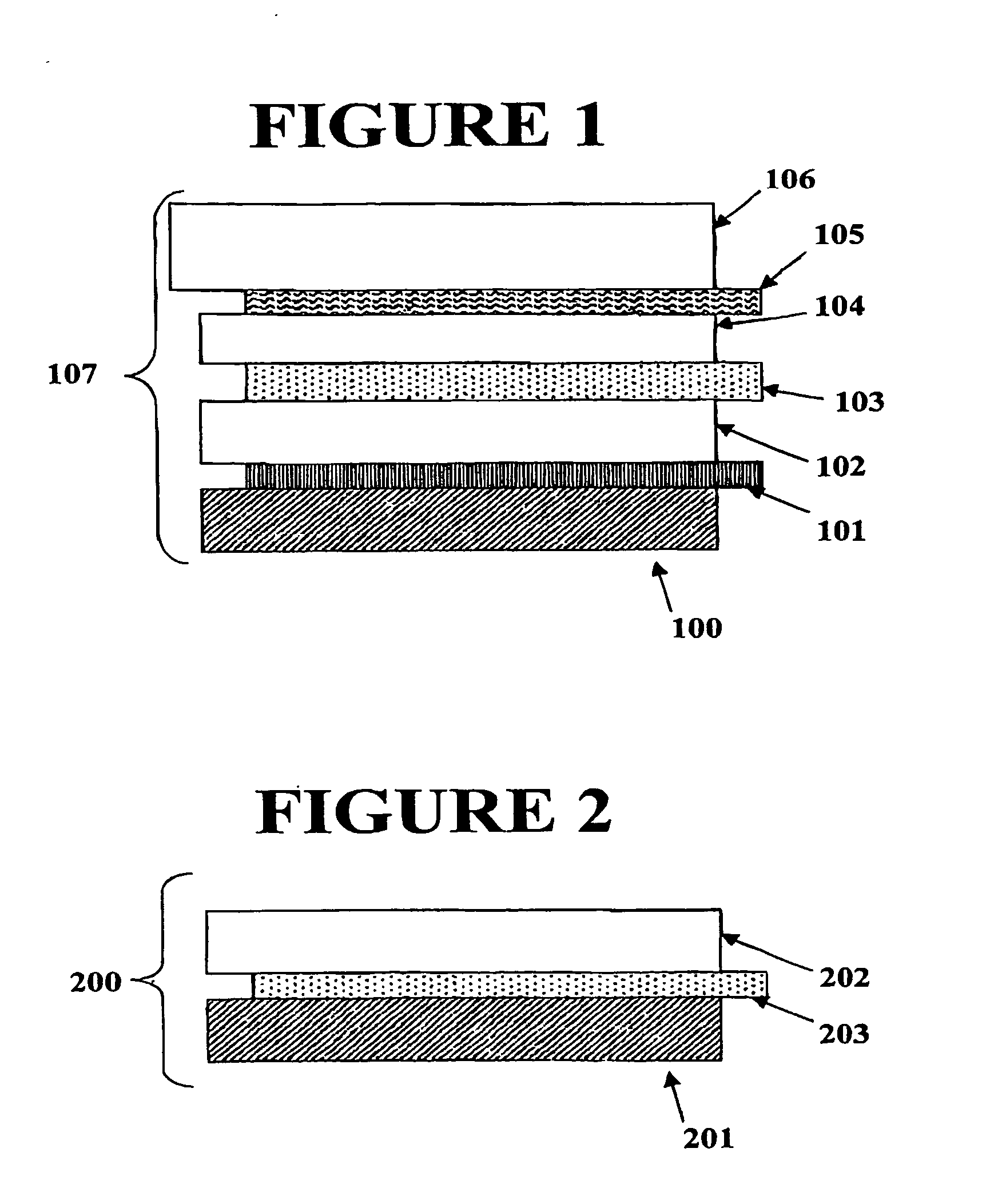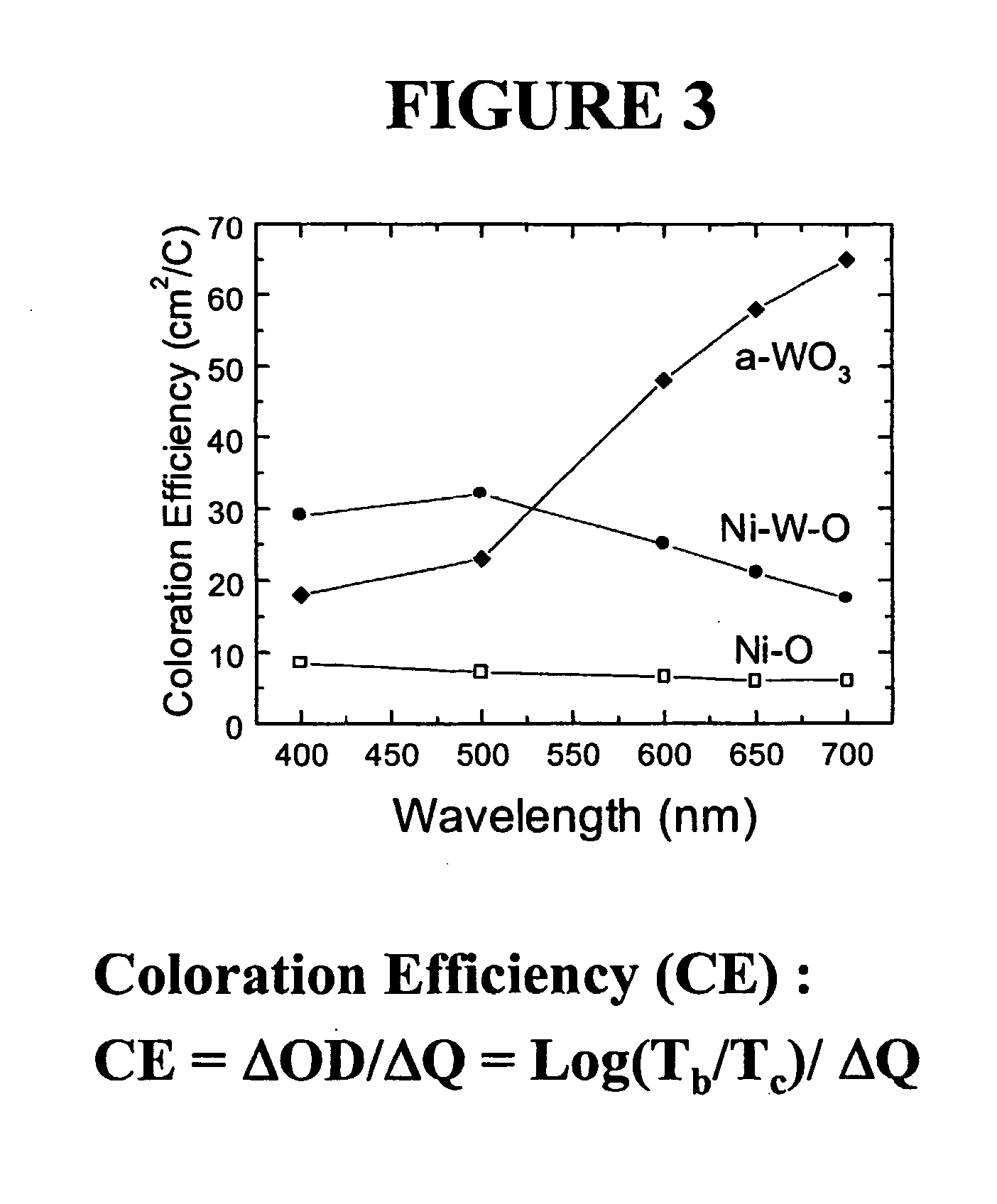Electrochromic counter electrode
a counter electrode and electrochromic material technology, applied in non-linear optics, instruments, optics, etc., can solve the problems of permanent alteration of electrochromic materials, oxidation or reduction of device constituents, and device breakage, so as to facilitate the calculation of coloration efficiency
- Summary
- Abstract
- Description
- Claims
- Application Information
AI Technical Summary
Benefits of technology
Problems solved by technology
Method used
Image
Examples
example 2
[0128] An amorphous film comprising 25 atomic % tantalum doped into nickel oxide was deposited onto ITO glass from a 4" nickel sputtering target having 30% of its surface covered with tantalum metal coupons. The deposition was carried out according to the procedure described above. The composition and nature of the film was confirmed by spectroscopic analysis as described above. The film was subjected to lithium ion injection according to the electrochemical procedure described above. It was found to have reversibly incorporated 15 mC / cm.sup.2 lithium ions. The lithiated film was subjected to coloration / bleaching cycles in an electrochemical cell. The colored film was examined spectroscopically according to the above detailed procedure and found to have a peak wavelength coloration efficiency of 55 cm.sup.2 / C at 400 nm.
example 3
[0129] An amorphous film containing 60 atomic % tantalum doped into nickel oxide was deposited onto ITO glass from a 4" nickel sputtering target having 72% of its surface covered with tantalum metal coupons. Deposition was carried out according to the procedure detailed above. The composition and nature of the film was confirmed by spectroscopic analysis as described above. The film was subjected to lithium ion injection according to the electrochemical procedure described above. It was found to have reversibly incorporated 10 mC / cm.sup.2 lithium ions. The lithiated film was subjected to coloration / bleaching cycles in an electrochemical cell. The colored film was examined spectroscopically according to the above detailed procedure and found to have a peak wavelength coloration efficiency of 25 cm.sup.2 / C at 400 nm.
example 7
[0138] An electrochemical device was prepared according to the sequence described above. The device of Example 7 was fabricated with an anodic coloring counter electrode comprising 25 atomic % tantalum incorporated into nickel oxide using a target prepared as described above in Example 2. The cathodically coloring electrochromic layer in this device comprised WO.sub.2.9, prepared as described above in Example 5. This device was tested by connecting it to an Arbin Battery Testing System and measuring the charge required to cycle it between colored and bleached states and measuring its visible spectrum when in the bleached and colored states.
PUM
| Property | Measurement | Unit |
|---|---|---|
| wavelengths | aaaaa | aaaaa |
| transmittance | aaaaa | aaaaa |
| voltage | aaaaa | aaaaa |
Abstract
Description
Claims
Application Information
 Login to View More
Login to View More - R&D
- Intellectual Property
- Life Sciences
- Materials
- Tech Scout
- Unparalleled Data Quality
- Higher Quality Content
- 60% Fewer Hallucinations
Browse by: Latest US Patents, China's latest patents, Technical Efficacy Thesaurus, Application Domain, Technology Topic, Popular Technical Reports.
© 2025 PatSnap. All rights reserved.Legal|Privacy policy|Modern Slavery Act Transparency Statement|Sitemap|About US| Contact US: help@patsnap.com



